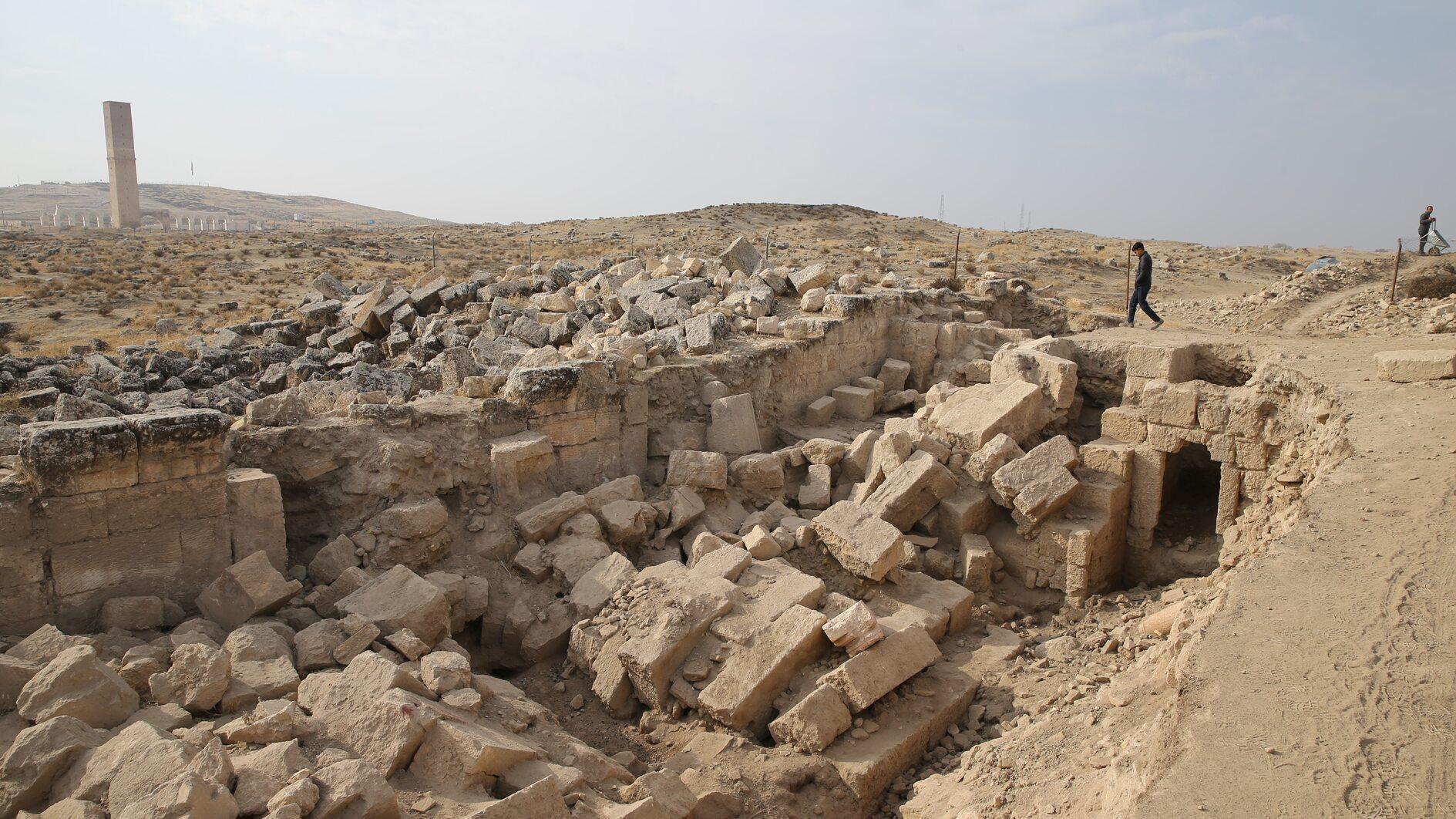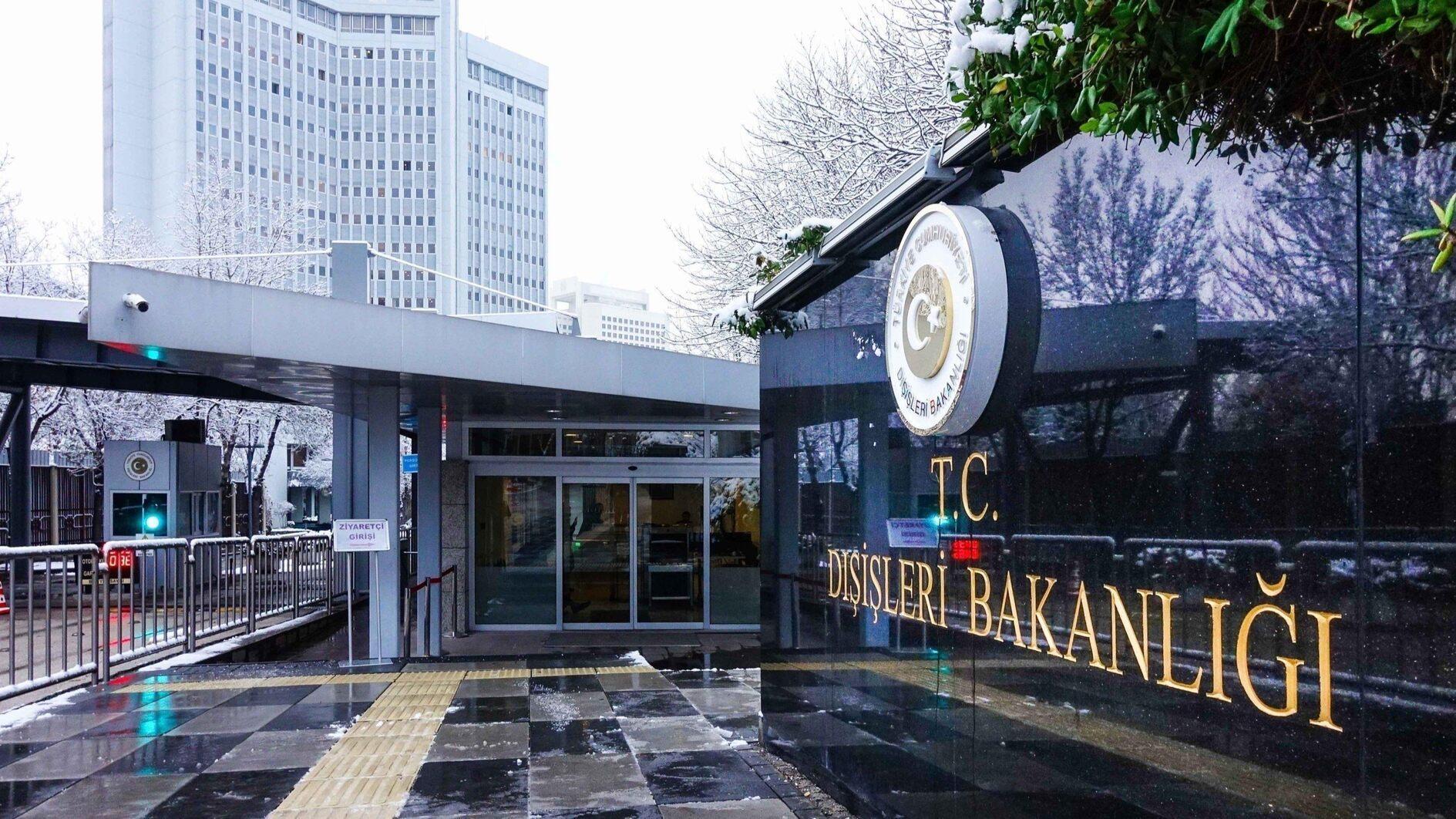Stained glasses, mosaics found at Harran archeological site
ŞANLIURFA

Archeologists have recently uncovered rare stained glass and mosaics conjecturally dating back to the fifth century at the Harran archaeological site in the southeastern province of Şanlıurfa.
These fresh, uncommon findings unearthed during the excavation works at the ruins of a cathedral provide insight into the architectural design of the historic cathedral, according to Professor Dr. Mehmet Önal, the site director from Harran University’s Archaeology Department.
Highlighting the discovery of gold-gilded glass mosaic tesserae used in the walls, arches and vaults of the cathedral, Önal noted that they had also previously unearthed fallen brick vaults. "We anticipate finding floor mosaics as well. Given that Harran is closely associated with Prophet Abraham and is considered his ancestral city, we expect to find a depiction of Abraham in the mosaics," he added.
Art historians have also examined the artifacts, including colored glass pieces embedded in plaster, classified as stained glass, Önal said, adding that their collective predictions suggest these findings may be among the earliest in the region.
"Based on our analysis, we believe the church to be one of the early Byzantine churches in our region. This is why these stained glasses are considered the earliest in the area, dating back to the fifth century. Therefore, the first instances of colored glass in this region may be observed here," he explained.
Noting that one of the glasses was blue, the other green and the third purple, Önal also provided insightful details on the purpose of these uncommon discoveries. "They enhance the heavenly ambiance of the church, casting colored light through the windows as people pray and read the Bible," he said.
Önal explained that the excavation also uncovered glass pieces featuring various designs, as well as bottles used for baptisms and for holding holy water.
They continue such works at full speed at the site within the scope of the Turkish Culture and Tourism Ministry’s Legacy for the Future project, aimed at amplifying support for archaeological undertakings. During the earlier digs, they also discovered the walls and column capitals of the cathedral, along with a significant portion of the north nave (main hallway) and identified three doors opening to the north, an unusual architectural feature for cathedrals.
"We no longer refer to this as an ordinary basilica church but as the cathedral of Harran, which served as the principal church of the region. Its length exceeds 50 meters, significantly larger than a typical church," Önal explained.
Following the completion of the works at the site, they will proceed with the restoration of the historic cathedral, subsequently opening the area to visitors, Önal pointed out.
One of the world’s oldest settlements and inscribed on the UNESCO World Heritage Tentative List, the Harran archaeological site continues to reveal important insights into the region’s historical and cultural heritage, reinforcing its significance as a key center of ancient civilization with these discoveries.
















